Part of Village Founded c. 9300 Length 250 m Period Neolithic | Material Clay, Limestone Area 5 ha Width 250 m | |
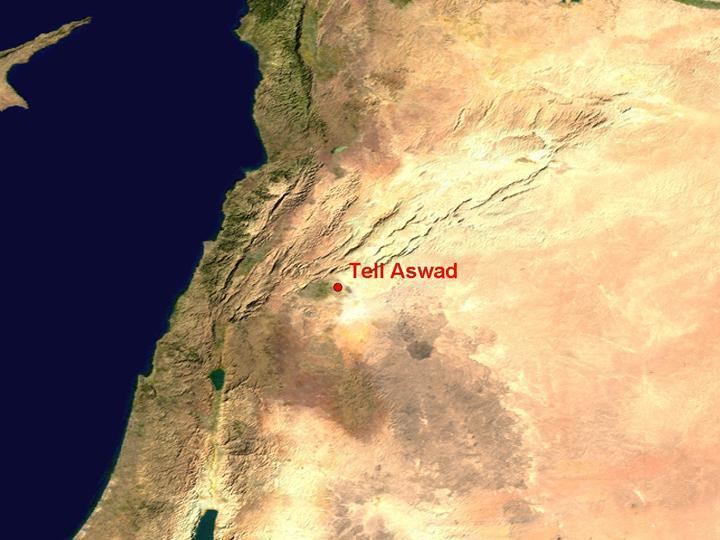 | ||
Archaeologists | ||
Tell Aswad (Arabic: تل أسود, "Black hill"), Su-uk-su or Shuksa, is a large prehistoric, neolithic tell, about 5 hectares (540,000 sq ft) in size, located around 48 kilometres (30 mi) from Damascus in Syria, on a tributary of the Barada River at the eastern end of the village of Jdeidet el Khass.
Contents
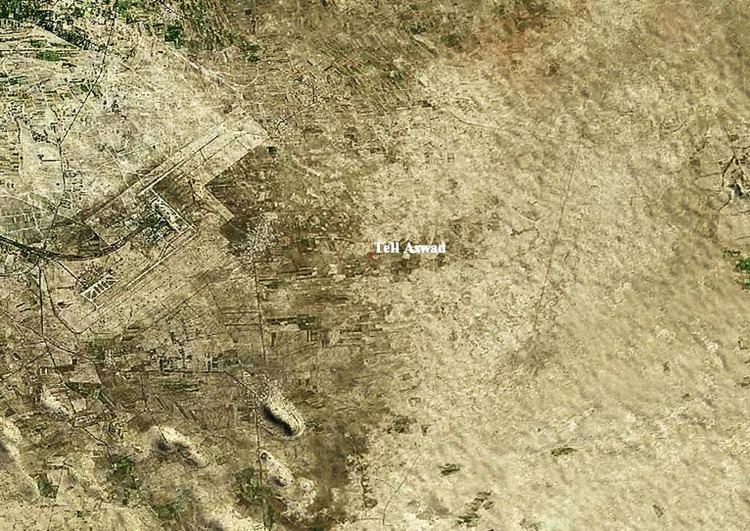
Excavation

It was discovered in 1967 by Henri de Contenson who led excavations in 1971–1972. The Aswadian culture found by de Contenson was far too advanced for its calibrated dating than anything else found in the region, and the only example ever found of this culture. Further technical investigation of the lithic series by Frédéric Abbès revealed inconsistencies so it was recently decided to re-excavate in six seasons by the French Permanent Archaeological Mission El Kowm-Mureybet under the co-direction of Danielle Stordeur and Bassam Jamous between 2001–2006. Investigations into the materials found are ongoing at the National Museum of Damascus.
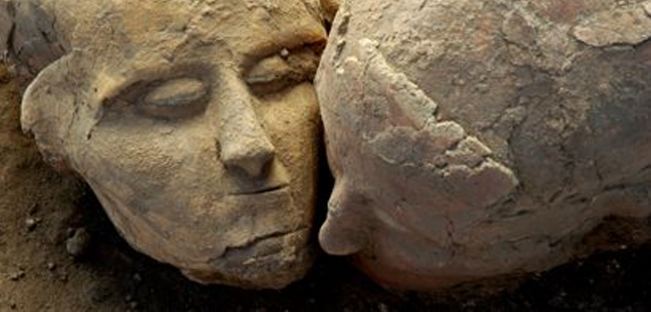
The fieldwork at Tell Aswad has changed the dating system at this site, abolishing the Aswadian period in the Pre-Pottery Neolithic A (PPNA) period (9500–8700 cal BC). The latest research has split the Pre-Pottery Neolithic B (PPNB) period into 3; PPNB Ancien from 8700 to 8200 cal BC and the PPNB Moyen from 8200 to 7500 BC. PPNB Récent has been equated with Dunand's "Néolithique ancien de Byblos".
Construction
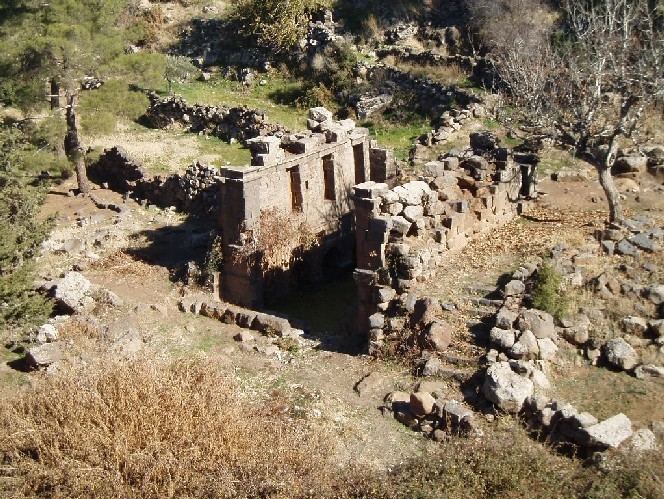
The first PPNB period involved construction of massive earth architecture, layering soil with reeds to construct walls. The inhabitants of Tell Aswad invented the brick on site by modelling earth clods with beds of reeds, which they then formed into raw bricks and eventually dried in later stages. Houses were round from beginning to the end of the settlement, elliptical or polygonal and were partly buried or laid. The orientation of the openings is most often to the East. This conforms with sites in the Southern Levant, whereas Northern Euphrates Valley sites generally display rectangular houses.
Culture
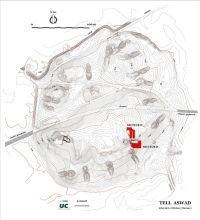
Tools and weapons were made of flint including Aswadian and Jericho point arrowheads. Other finds included grinding equipment, stone and mud containers, and ornaments made of various materials. Obsidian was imported from Anatolia. Basketry and weaving were commonplace with the imprint of embroidered fabric recorded on a fragment of plaster. Modelling clay and stone figurines of people, animals and geometric shapes such as spheres, cones, discs took place since the beginning of the settlement, these were sometimes mixed with vegetables.
The graves of more than one hundred well-preserved individuals were found. In the first half of occupation these were found in or around the homes, in later stages cemeteries are isolated outside the village. A collection of 9 technically and stylistically similar, over-modelled, skulls were retrieved from 2 areas. Detailed study of the skulls is currently underway to provide insight into the traditions and social ties of the villagers. The residents of Tell Aswad reserved a very sophisticated treatment for the dead: skulls were removed and cleaned, with a face modelled directly onto the bone with lime plaster and then painted.
Agriculture & animal domestication
Tell Aswad occupies a special location in the central Levant as a connecting region between northern and southern expansions of agriculture. Apparently a stronger trade relation is present to the southern cultures, although they had many things in common with the cultures that existed in the northern Levant. It is an example of one of the oldest sites of agriculture with domesticated emmer wheat dated by Willem van Zeist and his assistant Johanna Bakker-Heeres to 8800 BCE. Peter Akkermans and Glenn Schwatrz suggested on this evidence that Tell Aswad shows "the earliest systematic exploitation of domesticated cereals (emmer wheat) c. 9000-8500 BC". They suggest that the arrival of domesticated grain came from somewhere in the vicinity of "the basaltic highlands of the Jawlan (Golan) and Hawran". The claim is based on the discovery of enlarged grains, absences of wild grains and on the presumption that the site was beyond the usual habitat of the wild variety of emmer wheat. The earliest postulated evidence for einkorn wheat at Jericho was not dated until at least five hundred years later than Aswad's emmer. Flax seeds were also present. Fruit, figs and pistachios, were apparently very popular because they were found in large quantities. Stationary containers of mud and stone were found with carbonized grain found on the interior of one designating them as silos. Finally, reeds were widely used, especially as reinforcement in the architecture, but also for mats and baskets and perhaps as bedding or fodder.
A large number of goats were evident in the early stages indicating they were either hunted or herded. This is an important issue because the period when animal domestication first took place is still an open question. From the middle PPNB, the presence of corralled animals is evident. There are pigs, sheep, goats and cattle. For the latter two, production of meat and milk has been noted. In addition, cattle often show diseases resulting from their use for labour. The image that results from the study of the archaeozoological evidence is a village of farmers and herders in full possession of food production techniques. Hunting is well represented with two species of horses, two gazelles (mountain gazelle and Persian gazelle), wild boars, many water birds and some birds of the steppes. Finally, fishing is practiced throughout the occupation of the site. The presence of flora such as water reeds, rushes and tamarisk shows that the site was close to a very humid environment. The presence of bones of fish and aquatic birds like ducks, cranes and geese, indicated that the site was located near a lake and the inhabitants of Neolithic Aswad fully exploited its resources.
Tell Aswad has been cited as being of importance for the evolution of organised cities due to the appearance of building materials, organized plans and collective work. It has provided insight into the "explosion of knowledge" in the northern Levant during the PPNB Neolithic stage following dam construction. Aswad has been suggested to be amongst the ten probable centers for the origin of agriculture.
Sue Colledge gives dates for the earliest domesticated cereal use at Tell Aswad from approximately 9150 to 8950 BCE. This is preceded by an earlier and smaller cave site called Iraq ed-Dubb in Jordan showing evidence of domestic cereals possibly as far back as 9600 BCE.
Jacques Cauvin clarifies that Aswad was not the center for the origin of agriculture, stating that its first inhabitants "arrived, perhaps from the neighboring Anti-Lebanon, already equipped with the seeds for planting, for their practice of agriculture from the inception of the settlement is not in doubt. Thus it was not in the oasis itself that they carried out their first experiments in farming."
